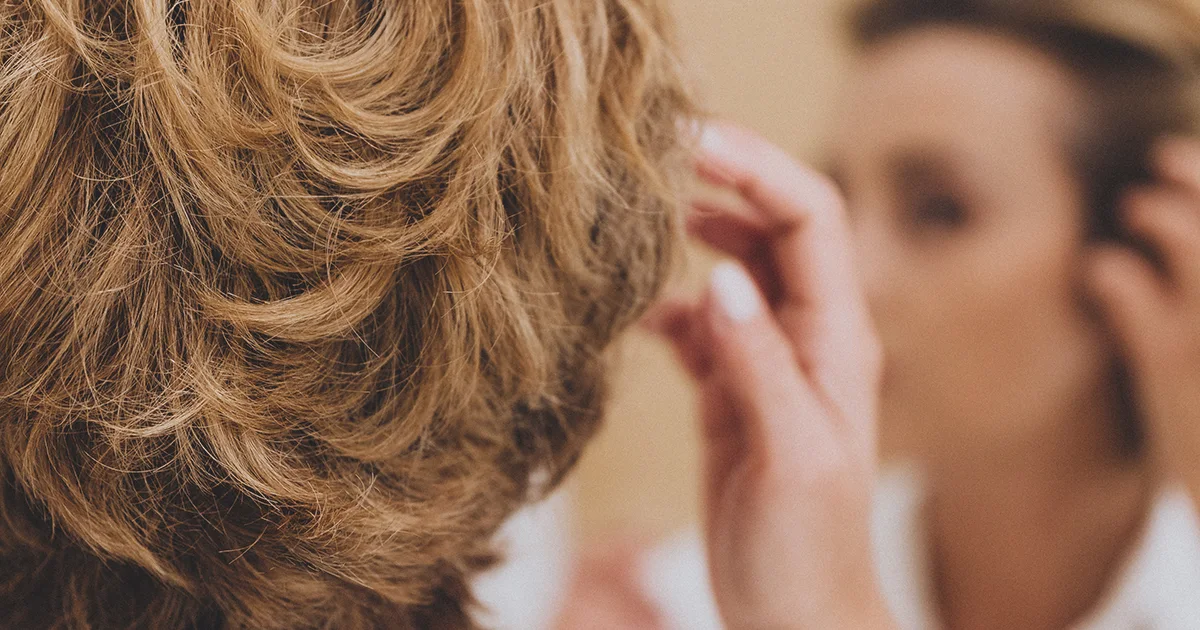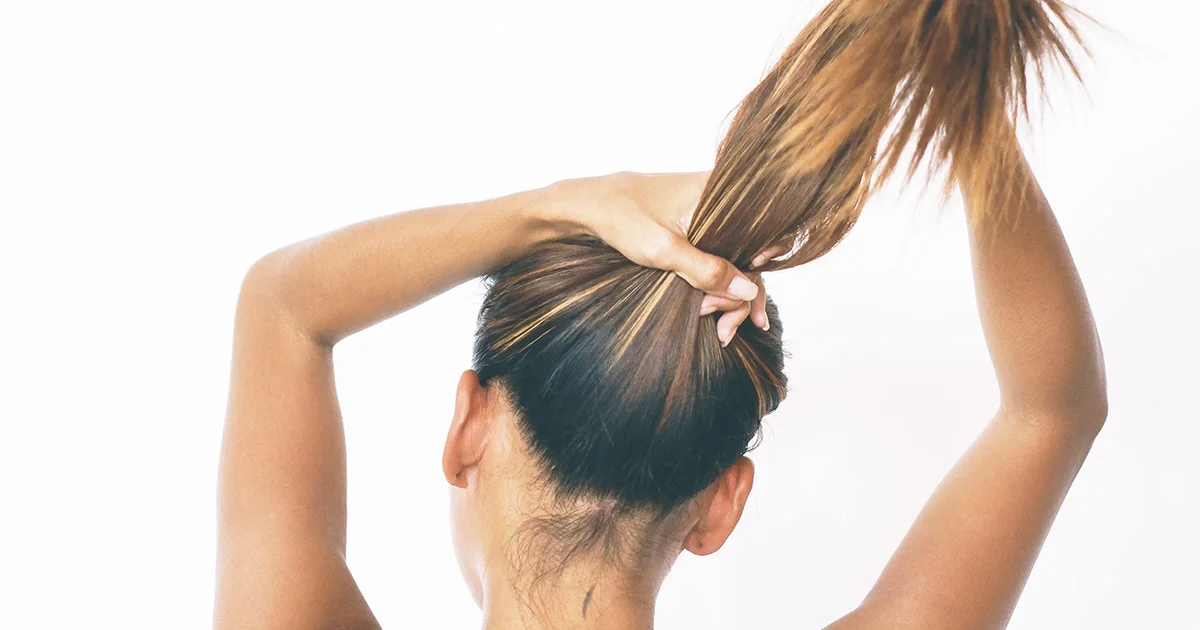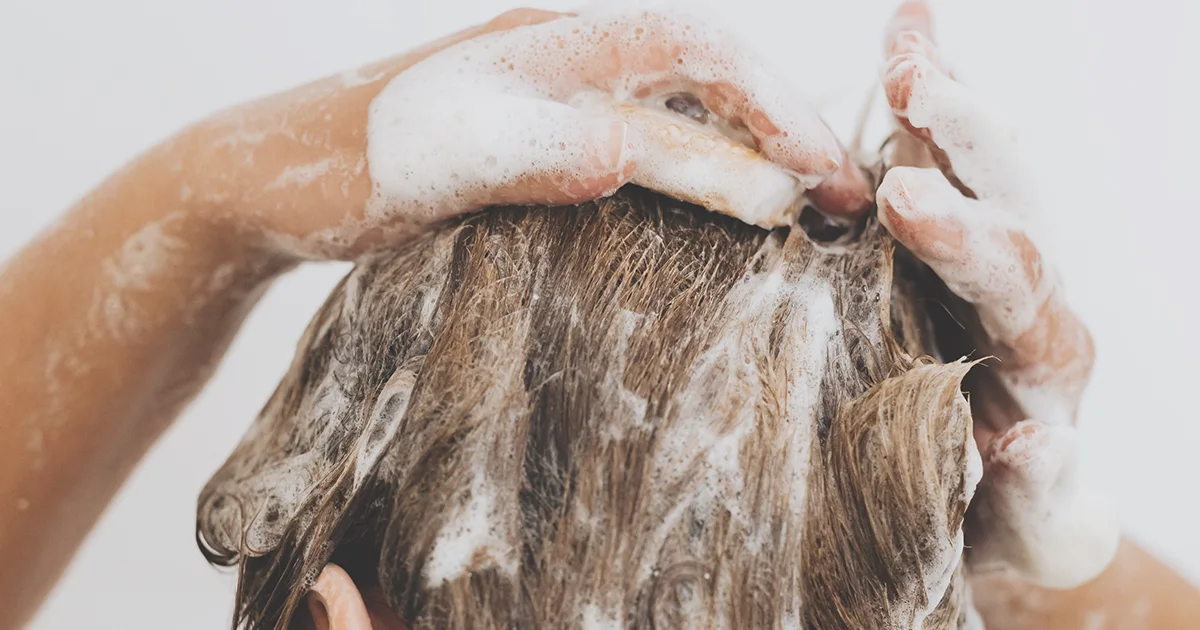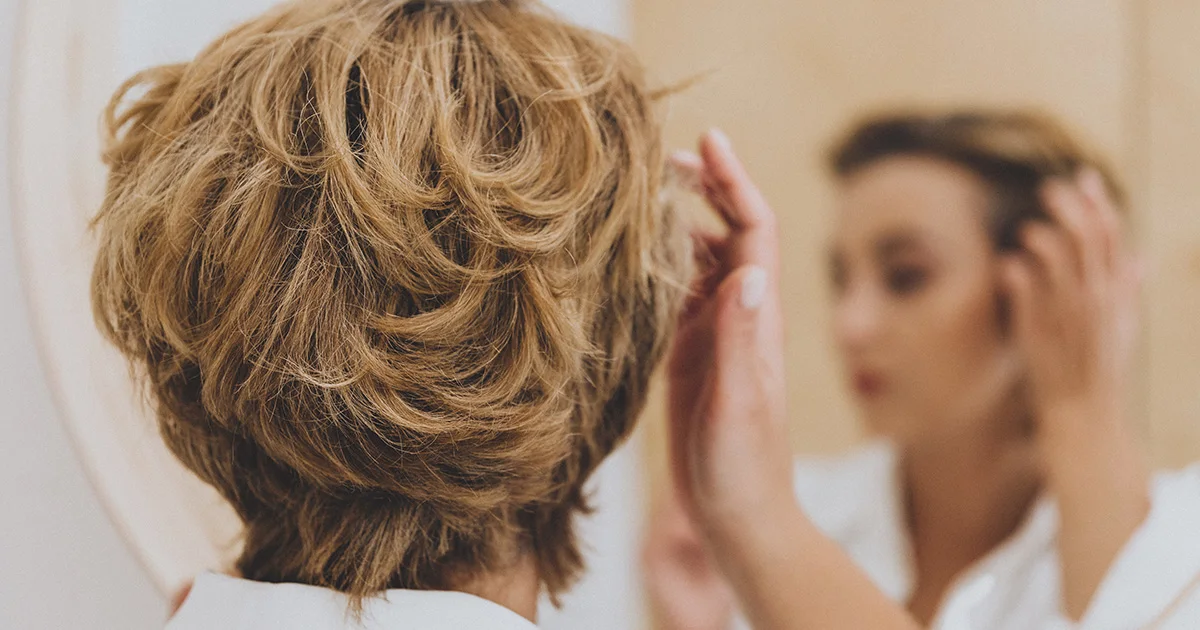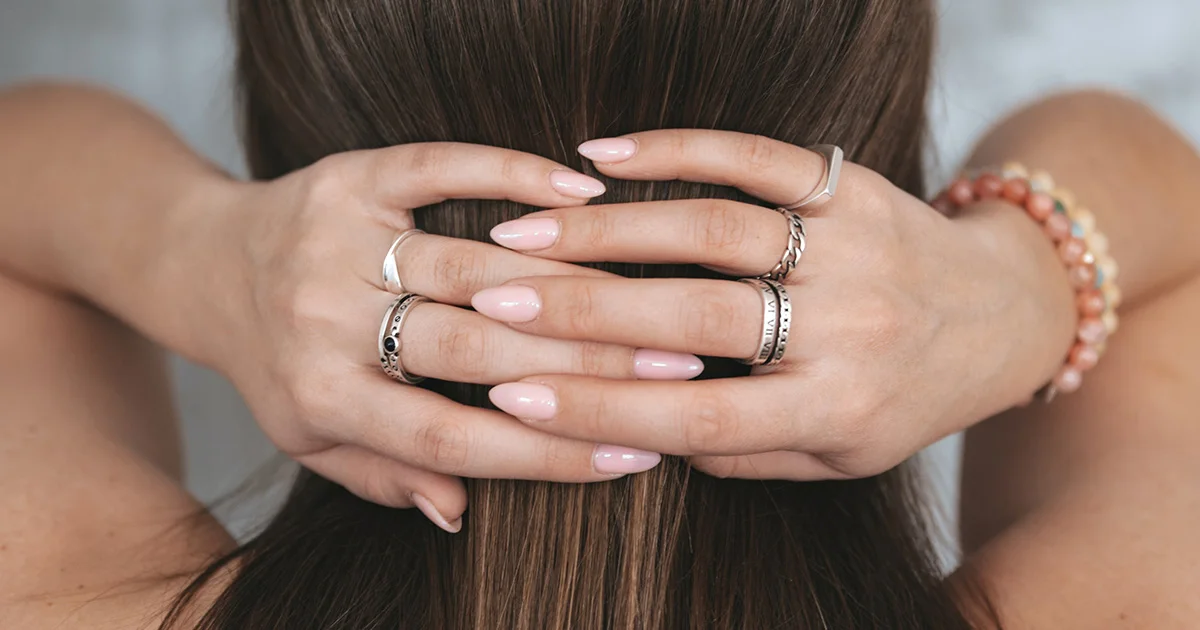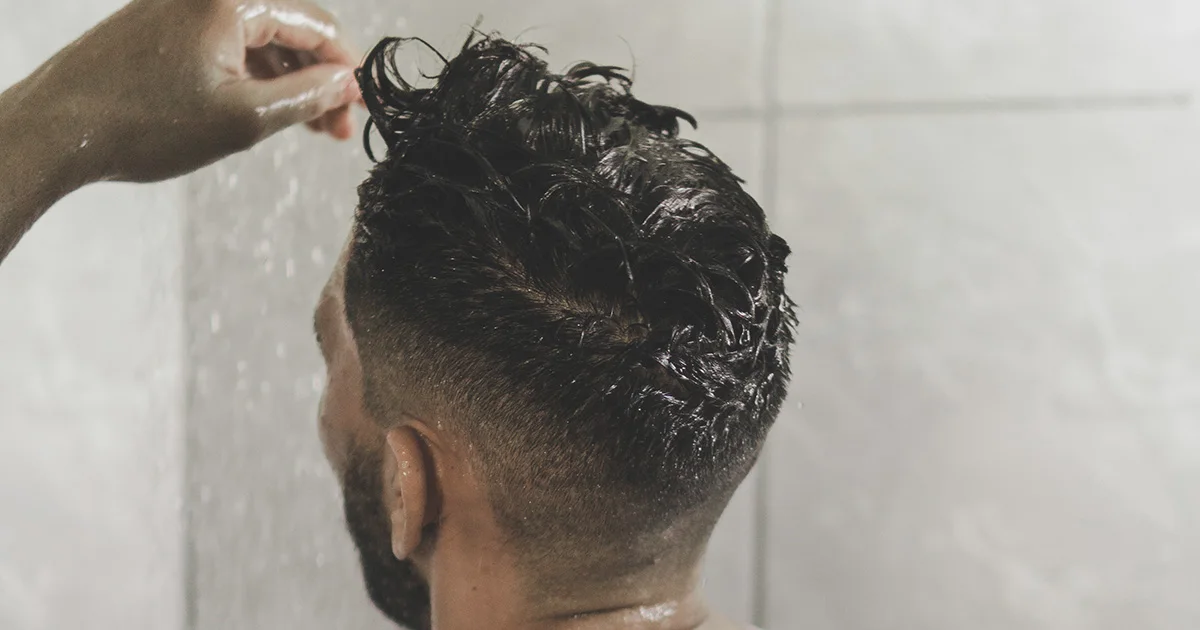Here's what we'll cover
Here's what we'll cover
Hats have the unique ability to be both useful and fashionable. Who doesn’t love the instant style a fedora or Panama hat offers, or the classic comfort of a baseball cap, But, if you’re starting to notice stray hairs in your hat, you may be wondering, does wearing a hat cause hair loss or baldness? Read on to find out what the research has to say.
Do hats cause hair loss?
Luckily, the answer to whether hats cause hair loss is no.
A study looking at identical male twins showed that various environmental factors might impact hair loss or male pattern baldness. Things like stress, smoking, dandruff, and drinking more alcohol were all associated with hair loss and thinning. (Specifically, smoking and dandruff were linked to increased frontal hair loss, while drinking four or more alcoholic drinks per week was associated with increased hair loss around the temples.)
You know what wasn’t associated with hair loss? Wearing hats. In fact, those who wore hats daily were less likely to experience hair loss.
Now, while the research was more about correlation than causation, its findings tend to suggest that wearing hats does not cause hair loss, even if worn daily. Still, dermatologists encourage hat-wearers to be mindful of sporting a tight hat too often during the summer when you’re more likely to sweat, as that can irritate or inflame the hair follicles.
Wearing a tight hat isn’t a good idea generally if you’re concerned about hair loss. Not only can it be painful, but in some instances, it can lead to traction alopecia, a form of hair loss caused by tight hairstyles or headgear.
Traction alopecia: hats may cause hair loss
Traction alopecia is hair loss caused by repeated and severe stress on your hair follicles. Think of a tight ponytail or bun, taut braids or locs, heavy hair extensions, or overnight rollers. But traction alopecia can also happen when you repeatedly wear the same tight headgear, such as for religious reasons or a hard hat or helmet as part of a professional requirement.
In these situations, hair loss can present differently depending on the type of headgear or hairstyle. For example, in one study of female nurses, a bit more than 3% of the women experienced hair loss at the part of their scalp where they secured their nurse’s cap. People who wear their hair in tight ponytails or buns may notice hair loss around the front of their scalp and by their ears, while weaves may lead to patchy areas or horseshoe patterns of hair loss.
Research shows that traction alopecia occurs in one-third of women of African descent who wear these tight hairstyles. Ballerinas, gymnasts, and military personnel—all known for stern hair styling—may also experience higher rates of traction alopecia compared with the general public.
Still, as suggested in the earlier study, there’s no conclusive evidence linking hats to hair loss or baldness. Based on studies of traction alopecia, you’d have to wear your hat super duper tight—and for extended periods of time—for it to cause hair loss, if it does at all. For reference, in a study of Muslim women who wore hijabs for 7 hours daily, one in three reported hair loss, primarily along the front of their scalp.
The good news is that if traction alopecia is detected early enough, hair restoration is possible by removing the source of tension on the hair. For example, those who wear headwear for religious purposes may wear it in a slightly looser fashion, change up where they place any attachments or pins on their scalp, and leave their hair out when not required to keep it covered.
Other causes of hair loss
Flat caps, beanies, fedoras, snapbacks—none of these hats will cause you to lose your hair or go bald. In fact, the most common cause of hair loss, androgenic alopecia, is completely out of your hands.
Androgenic alopecia
Androgenic alopecia, also known as androgenetic alopecia or male or female pattern baldness, is a genetic condition that affects both genders. Around half of American men aged 50 live with male pattern baldness, with the prevalence increasing with age. Female pattern baldness affects around 38% of women over age 70.
Androgenic alopecia usually occurs gradually over time and follows predictable patterns. For men, this means a receding hairline or bald spot, and for women, it’s usually thinning hair along the crown of the scalp.
Male pattern baldness is often caused by DHT (dihydrotestosterone), a male hormone or androgen. Among people who are genetically susceptible to androgenic alopecia, DHT causes hair follicles to shrink and generate shorter, thinner hairs.
While other types of hair loss are typically reversible, there is no cure for androgenic alopecia. That said, finasteride (brand name Propecia) and minoxidil (brand name Rogaine) can slow or stop hair loss and, if started early enough, can even regrow some hair.
Finasteride Important Safety Information: Read more about serious warnings and safety info.
Oral Minoxidil Important Safety Information: Read more about serious warnings and safety info.
Telogen effluvium
Extreme stress and shock manifest in the body in all sorts of ways, including hair loss. Emotional or physiological stress can lead to the sudden onset of a temporary hair loss called telogen effluvium. Usually, this occurs due to extreme weight loss, surgeries, illness, certain medications, hormonal changes, or having a baby. The good news is that the hair will typically grow back once the stressor has passed.
Medical conditions
Another condition that can yield hair loss or hair thinning is trichotillomania. Trichotillomania is a condition that involves recurrent, irresistible urges to pull out hair from your scalp, eyebrows, or other areas of your body, despite best efforts to stop. When the obsession is focused on the head, the repetitive hair-pulling can leave patchy bald spots on the scalp.
Another condition, alopecia areata, is when your body’s immune system attacks healthy hair follicles, causing hair to fall out and preventing new hair from growing. Lastly, hormonal problems, like thyroid disorder or being postpartum, can also lead to hair loss.
Medications
Hair loss and baldness can be side effects of certain medications and supplements, such as those used for high blood pressure, heart problems, cancer, acne, and more. For many people, stopping the medicine can improve hair loss and regrowth. Just be sure to check with your healthcare provider before quitting a medication.
Do hats cause hair loss? The bottom line
As you can see, there are many causes of hair loss, but hat-wearing is not one. In fact, wearing a hat can actually protect against hair loss—by shielding your hair from harsh UV rays, which can degrade the structure of your hair.
Again, unless you are wearing your hat so tightly that it feels painful or uncomfortable, hats don’t cause hair loss. How tight is too tight? If you notice an indentation on your forehead when you take off your hat, it’s too tight.
Follow these tips to keep your hair and hat in style:
If your hat feels tight, loosen it up!
Avoid wearing hats while sweating to prevent inflaming your hair follicles.
Wash your hat regularly to keep it clear of the dirt, dust, and bacteria that can build up and irritate your scalp.
If you notice a few stray hairs in your hat, do not worry. It is normal to lose 100—150 hairs daily, regardless of whether or not you wear hats. So, go ahead and wear that hat to protect yourself from the sun’s harmful UV rays or support your favorite team, and don’t worry about what it will do to your hairline.
DISCLAIMER
If you have any medical questions or concerns, please talk to your healthcare provider. The articles on Health Guide are underpinned by peer-reviewed research and information drawn from medical societies and governmental agencies. However, they are not a substitute for professional medical advice, diagnosis, or treatment.
Alhanshali-a, L., Buontempo, M. G., Bawany, F., et al. (2023). Religious headwear and alopecia: considerations for dermatologists. International Journal of Women's Dermatology, 9(3), e107. doi:10.1097/JW9.0000000000000107. Retrieved from https://www.ncbi.nlm.nih.gov/pmc/articles/PMC10482083/
Alhanshali-b, L., Bawany, F., Buontempo, M. G., et al. (2023). Understanding perceptions of hair loss in hijab-wearing women: a pilot survey study. International Journal of Women's Dermatology, 9(4), e115. doi:10.1097/JW9.0000000000000115. Retrieved from https://www.ncbi.nlm.nih.gov/pmc/articles/PMC10653569/
Billero, V. & Miteva, M. (2018). Traction alopecia: the root of the problem. Clinical, Cosmetic and Investigational Dermatology, 11, 149–159. doi:10.2147/ccid.s137296. Retrieved from https://www.ncbi.nlm.nih.gov/pubmed/29670386
Gatherwright, J., Liu, M. T., Amirlak, B., et al. (2013). The contribution of endogenous and exogenous factors to male alopecia: a study of identical twins. Plastic and Reconstructive Surgery, 131(5), 794e–801e. doi:10.1097/PRS.0b013e3182865ca9. Retrieved from https://pubmed.ncbi.nlm.nih.gov/23629119/
Ho, C. H., Sood, T., & Zito, P. M. (2024). Androgenetic alopecia. StatPearls. Retrieved on Jan. 25, 2023 from https://www.ncbi.nlm.nih.gov/books/NBK430924/
Hughes, E. C., & Saleh, D. (2023). Telogen effluvium. StatPearls. Retrieved on Jan. 25, 2023 from https://www.ncbi.nlm.nih.gov/books/NBK430848/
Hwang, S. M., Lee, W. S., Choi, E. H., et al. (1999). Nurse's cap alopecia. International Journal of Dermatology, 38(3), 187–191. doi:10.1046/j.1365-4362.1999.00556.x. Retrieved from https://pubmed.ncbi.nlm.nih.gov/10208613/
Lepe, K., Syed, H. A., & Zito, P. M. (2023). Alopecia areata. StatPearls. Retrieved on Jan. 25, 2023 from https://www.ncbi.nlm.nih.gov/books/NBK537000/
Malkud, S. (2015). Telogen Effluvium: A Review. Journal of Clinical and Diagnostic Research: JCDR, 9(9), WE01–WE3. doi:10.7860/JCDR/2015/15219.6492. Retrieved from https://www.ncbi.nlm.nih.gov/pmc/articles/PMC4606321/
Pereyra, A. D. & Saadabadi, A. (2023). Trichotillomania. StatPearls. Retrieved on Jan. 25, 2023 from https://www.ncbi.nlm.nih.gov/books/NBK493186/
Phillips, T. G., Slomiany, W. P., & Allison, R. (2017). Hair loss: common causes and treatment. American Family Physician, 96(6), 371–378. Retrieved from https://www.aafp.org/afp/2017/0915/p371.html
Samrao, A., McMichael, A., & Mirmirani, P. (2021). Nocturnal Traction: Techniques Used for Hair Style Maintenance while Sleeping May Be a Risk Factor for Traction Alopecia. Skin Appendage Disorders, 7(3), 220–223. doi:10.1159/000513088. Retrieved from https://www.ncbi.nlm.nih.gov/pmc/articles/PMC8138148/
Sebetić, K., Sjerobabski Masnec, I., Cavka, V., et al. (2008). UV damage of the hair. Collegium Antropologicum, 32 Suppl 2, 163–165. Retrieved from https://pubmed.ncbi.nlm.nih.gov/19138021/

